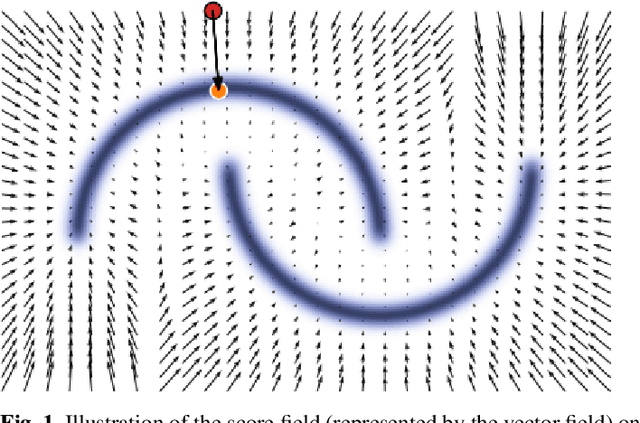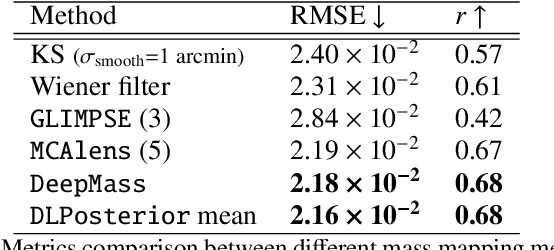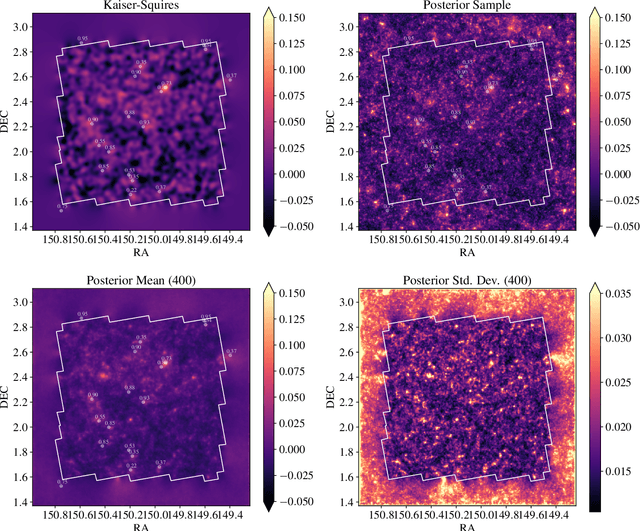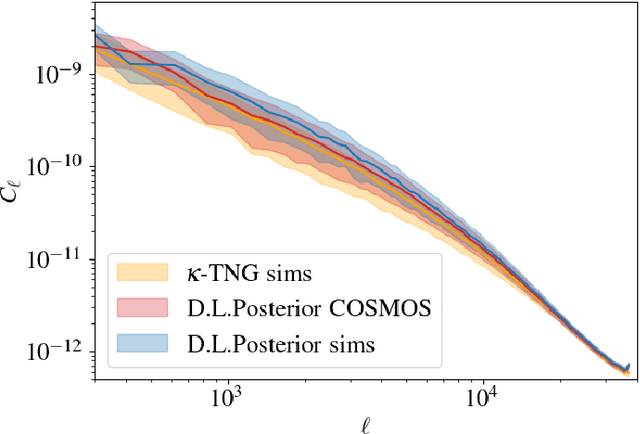Ken Osato
Probabilistic Mass Mapping with Neural Score Estimation
Jan 17, 2022



Abstract:Weak lensing mass-mapping is a useful tool to access the full distribution of dark matter on the sky, but because of intrinsic galaxy ellipticies and finite fields/missing data, the recovery of dark matter maps constitutes a challenging ill-posed inverse problem. We introduce a novel methodology allowing for efficient sampling of the high-dimensional Bayesian posterior of the weak lensing mass-mapping problem, and relying on simulations for defining a fully non-Gaussian prior. We aim to demonstrate the accuracy of the method on simulations, and then proceed to applying it to the mass reconstruction of the HST/ACS COSMOS field. The proposed methodology combines elements of Bayesian statistics, analytic theory, and a recent class of Deep Generative Models based on Neural Score Matching. This approach allows us to do the following: 1) Make full use of analytic cosmological theory to constrain the 2pt statistics of the solution. 2) Learn from cosmological simulations any differences between this analytic prior and full simulations. 3) Obtain samples from the full Bayesian posterior of the problem for robust Uncertainty Quantification. We demonstrate the method on the $\kappa$TNG simulations and find that the posterior mean significantly outperfoms previous methods (Kaiser-Squires, Wiener filter, Sparsity priors) both on root-mean-square error and in terms of the Pearson correlation. We further illustrate the interpretability of the recovered posterior by establishing a close correlation between posterior convergence values and SNR of clusters artificially introduced into a field. Finally, we apply the method to the reconstruction of the HST/ACS COSMOS field and yield the highest quality convergence map of this field to date.
 Add to Chrome
Add to Chrome Add to Firefox
Add to Firefox Add to Edge
Add to Edge